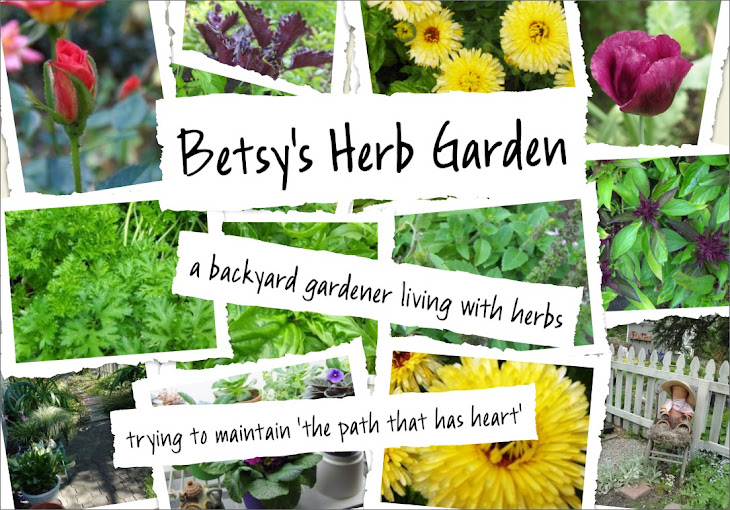
Sounds like a spy novel, eh? No such luck, just more garden trivia.
Well, a heavy frost has hit the nasturtiums and they are history. I did enjoy their reliable perky brightness this year, although why I planted the common mix instead of one of the really pretty varieties is a question for later.
Here's a photo:

The l-o-n-g hot summer of 2007 encouraged the annuals around here to bloom prolifically and lots of flowers means lots of seeds, if'n you don't go and kill off all the local pollinators with chemicals...
I'd always read and heard in herbie circles that you can make a pretty good substitute caper with the "buds" of nasturtiums but it took me this long to try it. For one thing I didn't cook with capers, being the chief cook and bottle washer for a gang of three hungry boys and their dad. Capers were always a tad la-te-da and I was busy and HAVE YOU SEEN THE PRICE of a bottle of capers?
For another thing I never knew what was meant by 'buds', I always considered buds to be immature flowers. NO, folks, the part you make nasturtium capers with is the unripened seeds.

Care for the recipe? It's really easy and a great payback on the price of a packet of seeds. that, and I got to enjoy the flowers all summer, right up until October.
Nasturtium Capers
First dissolve 1 Tbls. kosher salt in 1/2 cup water. (Boiling in the microwave does it fast.) Allow to cool to room temperature. While the salt water is cooling, gather about a half a cup of unripe nasturtium seeds (anything from indian bead size to fully expanded but still green), and wash if needed and remove any stems.
Add the seeds to the salt water and allow to soak for 24 hours.
The next day, drain the seeds, place them in the jar you want to save them in, and cover with 1/4 cup boiling vinegar. Cap and refrigerate.
This recipe makes a small jar. These measurements are all approximate, I don't know how it could be easier. The vinegar can be flavored with herbs if you like, or try different kinds of vinegar.
The color isn't as green as capers, but maybe adding some ascorbic acid to the salt water might remedy that. I notice the caper jar's list of ingredients includes ascorbic acid.
They are a bit crispier than real capers which may disappear in time, and there is a slightly different peppery nasturtium-ish flavor, but they are a pretty close approximation to capers. On the other hand, you made them. You know how they were grown and how they were processed, and they are from your backyard. Cool.
Here's what they look like, my nice crispy nasturtium capers (on the right) and the store bought real capers for comparison:


No comments:
Post a Comment